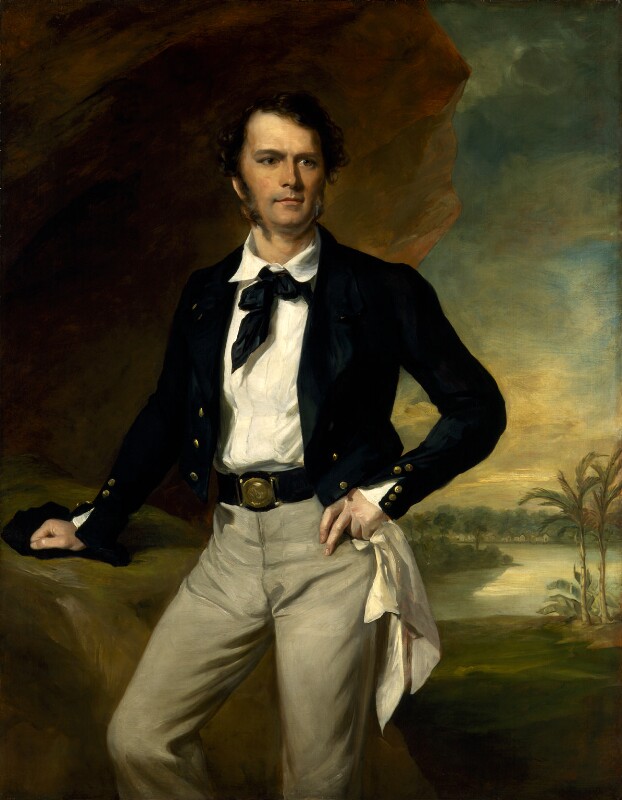Raja Brooke
| Sir James Brooke | |
|---|---|

Painting of the Rajah of Sarawak in 1847 by Francis Grant
|
|
| Rajah of Sarawak | |
| Reign | 18 August 1842 – 11 June 1868 |
| Coronation | 18 August 1842 |
| Predecessor | Sultan Tengah (as Sultan of Sarawak), Pengiran Indera Mahkota Mohammad Salleh (as Governor of Sarawak) |
| Successor | Charles of Sarawak |
| Born |
29 April 1803 Bandel, Hooghly, British India |
| Died | 11 June 1868 (aged 65) Burrator, United Kingdom |
| Spouse | none |
| House | Brooke dynasty |
| Father | Thomas Brooke |
| Mother | Anna Maria Brooke |
| Religion | Christianity (Church of England) |
| Battles/wars |
|---|
Sir James Brooke, Rajah of Sarawak, KCB (29 April 1803 – 11 June 1868), was a Briton born and raised under the Company Raj in NE India, who became the first White Rajah of Sarawak in Borneo.
After a few years of education in England, he served in the Bengal Army, was wounded, and resigned his commission. He bought a ship and sailed out to the Malay Archipelago where, by helping to crush a rebellion, he became governor of Sarawak. He then vigorously suppressed piracy in the region and, in the ensuing turmoil, restored the Sultan of Brunei to his throne, for which the Sultan made Brooke the Rajah of Sarawak. He ruled until his death.
Brooke was not without detractors and was criticised in the British Parliament and officially investigated in Singapore for his anti-piracy measures. He was, however, honoured in London for his work. The naturalist Alfred Russel Wallace was one of many visitors whose published work spoke of his hospitality and achievements. His final years were spent quietly in England.
Brooke was born in Bandel, near Calcutta, Bengal, but baptised in Secrole, a suburb of Benares. His father, Thomas Brooke, was an English Judge in the Court of Appeal at Bareilly, British India; his mother, Anna Maria, born in Hertfordshire, was the daughter of Scottish peer Colonel William Stuart, 9th Lord Blantyre, and his mistress Harriott Teasdale. Brooke stayed at home in India until he was sent, aged 12, to England for a brief education at Norwich School from which he ran away. Some home tutoring followed in Bath before he returned to India in 1819 as an ensign in the Bengal Army of the British East India Company. He saw action in Assam during the First Anglo-Burmese War until seriously wounded in 1825, and was sent to England for recovery. In 1830, he arrived back in Madras but was too late to rejoin his unit, and resigned his commission. He remained on the ship he had travelled out in, the Castle Huntley, and returned home via China.
...
Wikipedia
